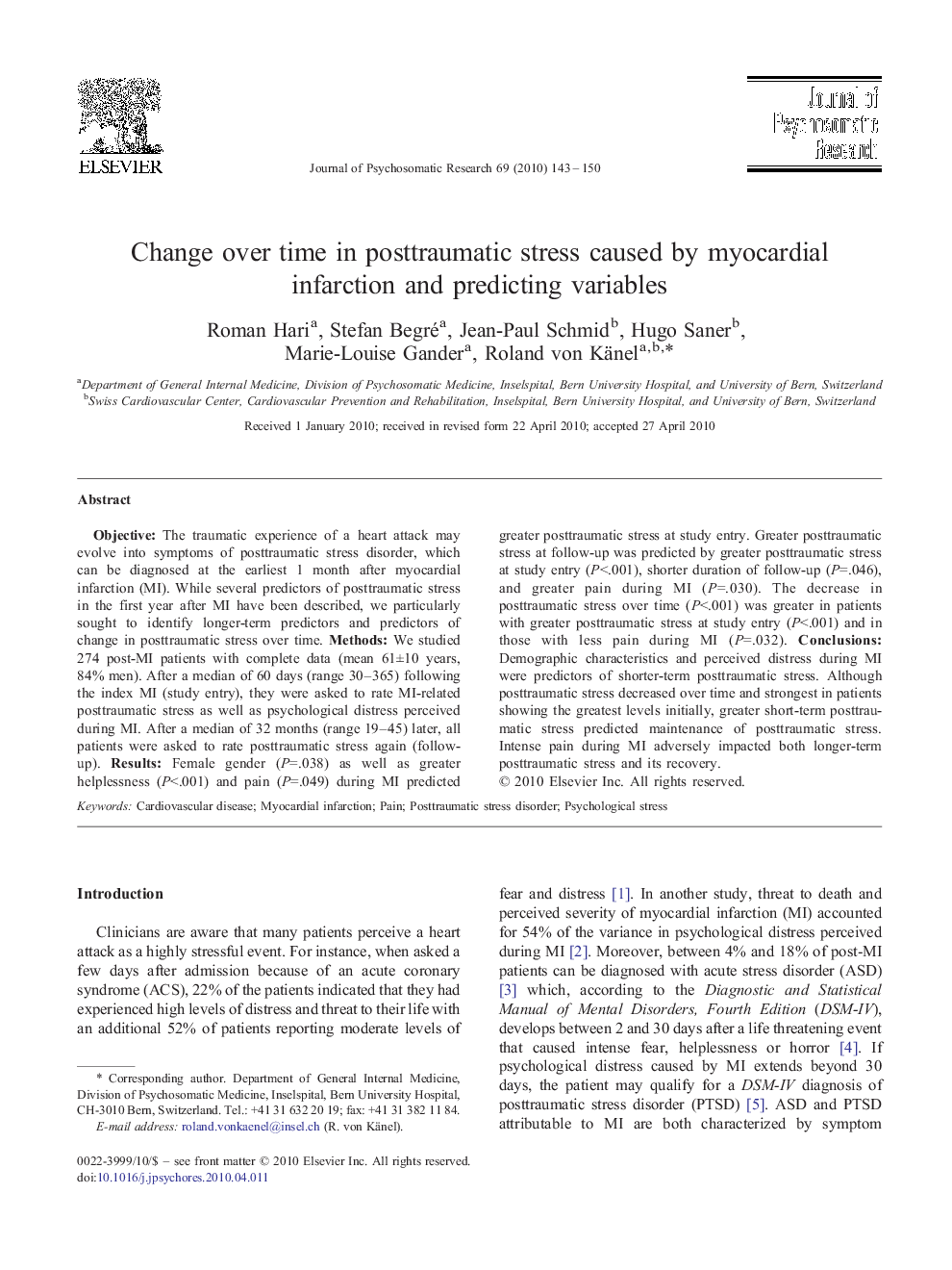| Article ID | Journal | Published Year | Pages | File Type |
|---|---|---|---|---|
| 950449 | Journal of Psychosomatic Research | 2010 | 8 Pages |
ObjectiveThe traumatic experience of a heart attack may evolve into symptoms of posttraumatic stress disorder, which can be diagnosed at the earliest 1 month after myocardial infarction (MI). While several predictors of posttraumatic stress in the first year after MI have been described, we particularly sought to identify longer-term predictors and predictors of change in posttraumatic stress over time.MethodsWe studied 274 post-MI patients with complete data (mean 61±10 years, 84% men). After a median of 60 days (range 30–365) following the index MI (study entry), they were asked to rate MI-related posttraumatic stress as well as psychological distress perceived during MI. After a median of 32 months (range 19–45) later, all patients were asked to rate posttraumatic stress again (follow-up).ResultsFemale gender (P=.038) as well as greater helplessness (P<.001) and pain (P=.049) during MI predicted greater posttraumatic stress at study entry. Greater posttraumatic stress at follow-up was predicted by greater posttraumatic stress at study entry (P<.001), shorter duration of follow-up (P=.046), and greater pain during MI (P=.030). The decrease in posttraumatic stress over time (P<.001) was greater in patients with greater posttraumatic stress at study entry (P<.001) and in those with less pain during MI (P=.032).ConclusionsDemographic characteristics and perceived distress during MI were predictors of shorter-term posttraumatic stress. Although posttraumatic stress decreased over time and strongest in patients showing the greatest levels initially, greater short-term posttraumatic stress predicted maintenance of posttraumatic stress. Intense pain during MI adversely impacted both longer-term posttraumatic stress and its recovery.
